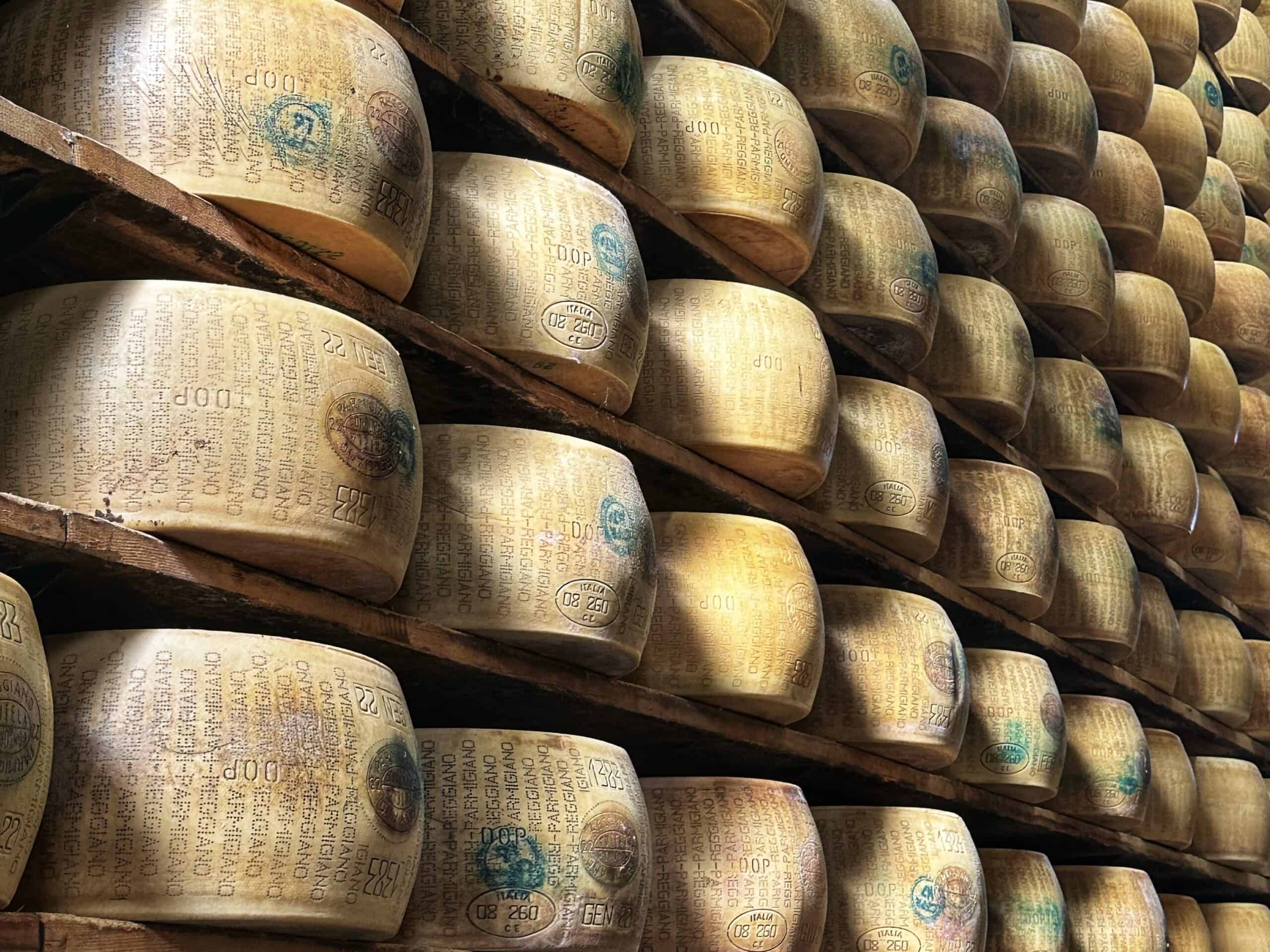
In the Middle Ages, the monks, driven by the search for a cheese that could last over time, were the first producers.
Thanks to the salt from the salt pans of Salsomaggiore and the milk of the cows raised on the farms of the monasteries, they obtained a cheese with a dry paste, large wheels and suitable for long storage.
Parmigiano Reggiano is produced exclusively in the provinces of Parma, Reggio Emilia, Modena, Bologna to the left of the Reno River and Mantua to the right of the Po River.
The animals’ diet is taken care of in compliance with a regulation that prevents the use of silage fodder, fermented foods and meal of animal origin.
The milk is collected twice a day (morning and evening) as per centuries-old tradition.
Approximately 550 litres of milk are needed for each wheel of Parmigiano Reggiano.
Process
The coagulation of the milk takes place slowly and naturally thanks to the addition of rennet and whey starter obtained from the previous day’s processing and rich in natural lactic ferments.
The curd is fragmented by the master cheesemaker into tiny granules thanks to a tool called a thorn.
At this point, everything is cooked at a temperature of 55°C, at the end of which the cheese granules fall to the bottom of the boiler forming a single mass.
After about 40/45 minutes, the cheesemaker extracts the cheese mass that will give life to two twin wheels.
Cut into two parts and wrapped in the typical linen cloth, the cheese is placed in a mould that will give it its final shape.
First identification marking
Each wheel is assigned a plaque with a unique and progressive alphanumeric code: it is the identity card that at any time and in any place makes it possible to identify its origin with the month and year of production, the serial number that distinguishes the dairy and the unmistakable dotted writing on the entire circumference of the wheels.
Salting
After a few days, the wheels are immersed in a saturated solution of water and salt: this is salting by osmosis. With this last step, the production cycle of Parmigiano Reggiano ends and the maturing period begins.
Ripening
There are different types of aging of Parmigiano Reggiano: 12 months, 18 months, 24 months, 30 months, 36 months and in some cases even 60 months of maturation can be reached.
Each maturation gives different characteristics and flavors that denote a cheese in itself and peculiarities in the combination with local wines, but also with honey, mustards and jams.
Final inspection and marking
After 12 months, the experts of the Consortium check all the wheels one by one through an examination where the wheel is struck with the hammer and the attentive ear of the expert beater recognizes any internal defects that may interfere with the quality.
The wheels that are suitable are marked with the appropriate fire stamp, thus becoming Parmigiano Reggiano DOP.
A few millimetres of rind are removed from moulds that do not meet the requirements of the DOP, thus removing the marks and identification marks.
Visit made at the San Silvestro Cooperative Dairy in Castelvetro di Modena (MO) during the “Weekend of Taste” on 8th October 2023. Experience bookable through www.visitmodena.it.















